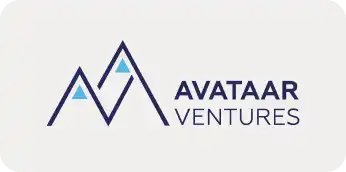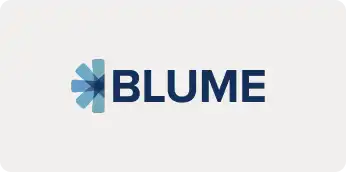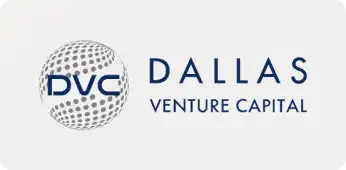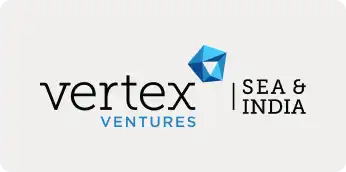Varun Shoor is the Founder of Kayako, a customer service software company based in London, United Kingdom. Varun started in 2001, bootstrapped the company, and exited in 2018. Kayako was acquired by ESW Capital.
And this is how it all started.
Varun came across a product called wonder desk and decided to make an open-source version. But then he saw the opportunity to build a company out of it and ended up doing just that.
He chose to go with product-led growth (PLG), though that was not the term so prevalent in those days. He in fact has a running joke as part of SaasBoomi GrowthX that product led growth means that you don’t really know why you are growing.
For him PLG led to SERP rankings, word of mouth and a bit of virality powered by links. But he got comfortable with his profits along the way and growth stagnated. Finally, he decided to shift base to the UK because his co-founder was there, it was closer and he feared the company would collapse if he was in a 12-hour time zone. Operating from the UK he could focus on India from 9AM to 1PM and US from 1PM to 6PM. This was a benefit of GMT he realised only when he started operating from there.
Come 2018 and Kayako was acquired, and now he is ready to take a go at starting a new venture again.
He is also associated with SaasBoomi GrowthX initiative, a unique personalised, 16-weeks coaching program for startups. In a SaasBoomi Slack Ask-Me-Anything session, he answered questions about product marketing, positioning, building teams and challenges faced by entrepreneurs and first-time founders.
If you plan to bootstrap your latest SaaS idea or product, dive straight in.
Advice to new entrepreneurs
If you are building a product in a new category, get comfortable with making profits. Focus on the lead you have in the category because you are the first one. You will be able to build something much bigger than just a profit-making company.
Most coder-entrepreneurs focus on the tech side of the venture, but that’s the biggest mistake. As the founder you must concentrate on the business side from day one.
You cannot do everything yourself, so build a leadership team quickly. At the same time, however good the team, never abdicate leadership completely. It’s your baby and you must always be there to provide direction.
Positioning is one of the single most important things that can make or break a startup. As an entrepreneur, you must learn all about positioning, pricing and messaging. That is something he does aggressively in the GrowthX program as well.
If you get your product marketing right, it is possible to sell to mid-market even when your initial customers are enterprise. Zendesk is a good example here; it sells to both startups and enterprises with very crisp pricing and packaging.
Reading and learning should be an important part of any entrepreneur’s journey. Some of the books he recommends, for both personal and business development, are 12 Rules for Life, Play Bigger, Positioning by Al Ries and Obviously Awesome.
And these are things he wished someone had told him before starting out:
- Every opportunity has a limited window. It opens and shuts. Don’t get lazy and assume the growth will continue or the channel that’s worked before will.
- Life gives you more than one opportunity. So, if one has shut, the other one opens as long as you pursue it
- Early success is a lousy teacher.
- Build a tight ship from the beginning. Hire well and fire fast.
- Don’t ignore the legal paperwork! Or you might just get the most expensive degree in law like me!!
- Pursue growth. Growth hides all failure. Everything else is vanity.
Bootstrapped vs VC
The VC story is so enticing that one can get caught up in building a bootstrapped company like a VC one. This is the biggest mistake that bootstrapped companies can make, according to Varun. A bootstrapped company shouldn’t try to be a VC company and a VC company shouldn’t try to be bootstrapped.
For bootstrapped companies the primary goal should be returns for the shareholders, i.e., the founders. In that case even exit won’t be necessary. However, entrepreneurs deserve financial security and independence, so keeping exit or cashing out (if bootstrapped) should be kept in mind.
Pull product vs push
Depending upon the existing market demand, there are two kinds of products – push products and pull products. Pull products are those where the market pulls the product from your hand and for push products you have to sell the problem. Obviously, having a pull product is a good place to be in. Kayako was a pull product because the webhostingtalk.com community was eager to adopt the product. For it the growth just happened. The early adopters came in droves and volume had to be ignored. Push products require a more nuanced approach where at least one of the founders should have industry experience and market research should be proactive. Intercom is one of the SaaS companies he wished he had founded, because of the way they built their product. He says,
I am in awe of the machine that was built late into the story and executed to perfection.
After Kayako was acquired in 2018, Varun himself started work on building in an existing category and then became disillusioned really quickly. He realised that inventing things, spotting patterns in an industry and creating a pull-based product was what fascinated him and that is what he will probably do next.
Building a team for success
The team building must start with the founding team. In an ideal world you should have a product person, a tech person and a chief marketer (aka the CEO) in the founding team. Varun advises filling the tech role the first as knowledge handover becomes progressively difficult as the company ages. Next comes the marketing role and then product. Either of these can come before the other depending upon the strength of the other team members.
Team building mistakes to avoid
One should never hire friends and relatives, or just for the logo where they worked previously. A bigger mistake would be to keep them on even when they prove themselves to be a dud. Varun says:
Biggest mistakes bootstrapped companies make are in firing. I have noticed dead wood tends to accumulate more in bootstrapped vs funded as the accountability is lower and excuses more.
Building teams from within
Varun is a big fan of building teams from within. And probably that was the reason Kayako was such a success at creating a truly global company where continuous knowledge sharing happened. People in India learned from the best in the UK and US. They also regularly flew people around but from west to east and east to west. That culture was something really special and missed by those who moved on from Kayako. It also supported organic growth like nothing else. For instance, when they started no one knew what SaaS was, yet they figured out together. Varun is proud of the team he nurtured because a lot of ex-Kayakers have gone on to do great things, with two companies – Customersuccessbox and Slintelbeing, both funded – founded by ex-Kayakers.
Typical challenges faced by a startup
Varun feels that all the top business challenges are internal to you – related to mindset and idea execution. But that’s fodder for discussion another day. Here he sets out two external challenges:
- Setting a really high bar for execution: And being unable to meet them. This, he feels, is a real problem because founders tend to start big. Ideally, they should start small and the “big” place is where they eventually should be. Citing his own example, he shares that Kayako was out-executed by Zendesk and they struggled to get the same marketing and product machine going. Eventually Varun had to move to the UK to get things moving the way he envisaged.
- Not knowing anything about marketing: Varun himself was a tech CEO who didn’t understand marketing. Changing his outlook to marketing and then aligning the company was very challenging. He feels that all founders must understand marketing before they start. Because as the founder their main objective should be to sell the product.
Selling globally from India
Varun shifted base to the UK as a result of what he calls a ‘Hail Mary’ decision. He spent five years there, which transformed him completely. But he feels moving base is a very personal decision and there’s no right or wrong to this. Being closer to customers always helps but it is possible to successfully sell globally from India.
Appear international: Varun advises appearing international from the beginning. They should feel it’s a company in Austin or SF. This means your messaging should feel American, your photos should feel American, your design should feel American. This was the #1 transformation he took for PipeCandy.com when they joined GrowthX. He gave the company an American look and it worked; all major metrics accelerated.
Build a truly international team: For building a truly international team, Varun advises account executives, content marketing and product marketing hires in the west. And keeping engineering, SDR/BDR, customer support and success in India.
Price right: Since you now have a bigger playing field, pricing must be right, else it’s very easy for the prospects to move away.
Get the TOFU right: If you focus on large lead volumes, without creating pressures for the visitors, you will almost always convert. It’s not rocket science; all you need is a bit of patience and willingness to experiment.
Focus on PPC from the beginning: Varun feels that Kayako missed the boat on PPC because initially they were not spending on marketing. He strongly recommends all startups to get their PPC funnel going because with PPC there’s a small window of opportunity; once the keywords become expensive, it’s lost!
Acquisition Lessons
Varun had not started Kayako with an aim to cash out. It did not feature in his priorities very late in the journey, and this is what he really did about it:
I decided to sell. Engaged a banker, SignalHill and now DCS Advisor…Got a few term sheets…Few were pulled at last minute and I took the only attractive one out of them…Was tired and wanted to move on.
But this taught him many lessons:
- You should always keep a data room always up to date
- Run your business via spreadsheets to start with, and then an accounting software when you can afford!
- As a founder, you must understand the function of P&L and cash flow. They are not just compliance statements but show the true picture of business.
- You should start building relationships with the business development of your buyer universe years in advance. This is what is done really well in the west by quality entrepreneurs and we must learn from them. Even if it means regular steak dinners with biz dev folks to keep the relationship active!!
What next for Varun
Varun is itching to code again, and like before, start solo. Here’s what he says. Unabridged and straight from the horse’s mouth:
I did almost take a stab at starting up last year but for all the wrong reasons. I craved fame and glory so wanted to raise a massive round. I actually fell in love with the idea and the prospect of 2nd-time success more than the idea of product – then Covid hit and was a blessing in disguise.
He just wants to get to $100K ARR to start with!!
Kayako was born out of serendipity, it was one of the few experiments I loved that clicked. So now I have a few ideas in mind that I just want to experiment with, treat the business as micro-SaaS, build on ideas that I love and to sustain just get to $100K ARR with me at the helm and then see what to do next.






























